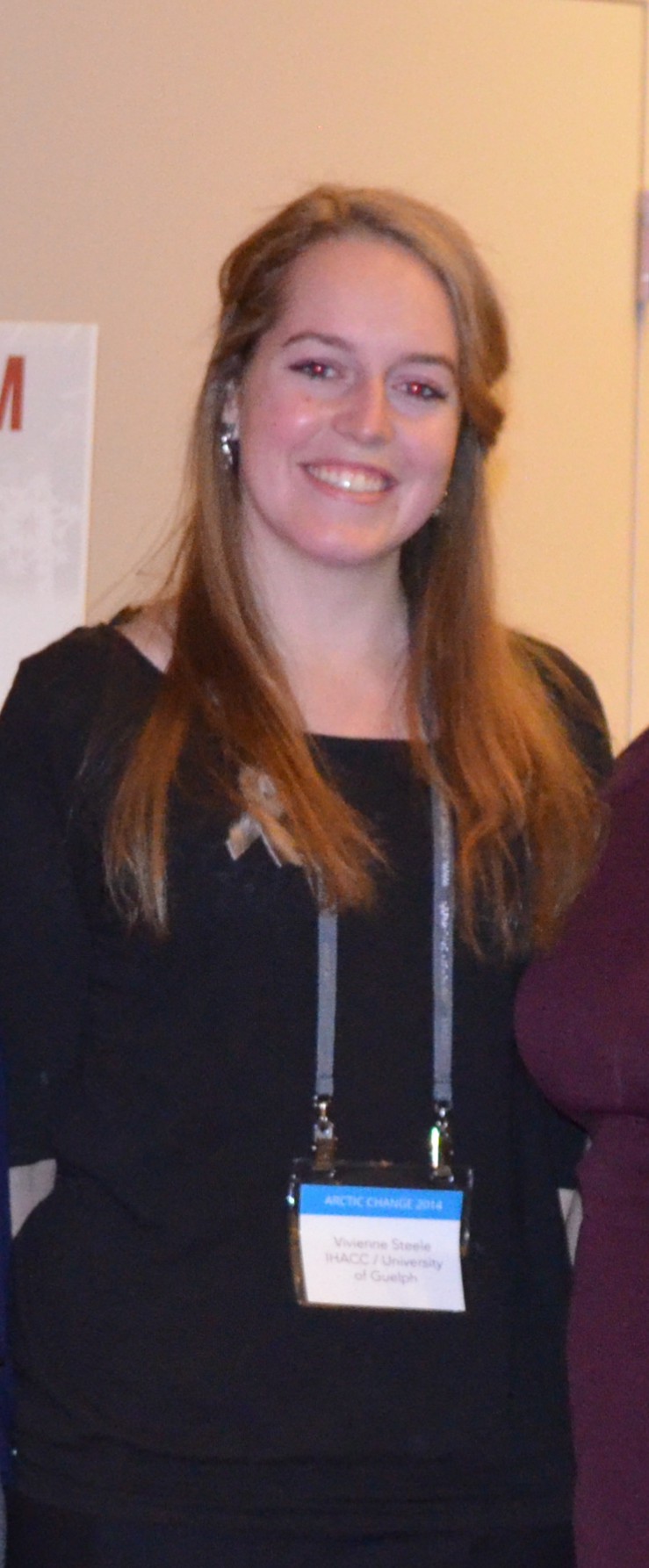Reflection by Vivienne Steele
 Friday was the fifth and final day of the 2014 Arctic Change Conference in Ottawa. A shorter day, the schedule included a morning of plenary sessions and topical sessions, and a brief afternoon session centered on “Next Steps” in Arctic research.
Friday was the fifth and final day of the 2014 Arctic Change Conference in Ottawa. A shorter day, the schedule included a morning of plenary sessions and topical sessions, and a brief afternoon session centered on “Next Steps” in Arctic research.
The first presenter was Denis Didier-Rousseau, of the French Arctic Initiative (FAI), who presented the objectives of the FAI, all of which focus on the need to implement an interdisciplinary type of project to address the impacts of climate change in the North. The initiative will address these impacts in the environmental, societal and economic and political spheres under which they fall. The FAI also focuses on incorporating Indigenous knowledge systems in each and every one of their research projects.
An engaging presentation on “permafrost as a priority” by Dr. Warwick Vincent from Laval University followed. Dr. Vincent works with the Arctic Development and Adaptation to Permafrost in the Tundra (ADAPT) group. Highlighting the recurrence of permafrost-focused posters and presentations throughout the conference, he re-iterated the importance of understanding and adapting to the changing landscape of permafrost in Canada’s North. Permafrost makes up 50% of Canada’s landscape and is the “foundation and underpinning of infrastructure in the North.” Dr. Vincent explained that we need to develop an integrative strategy for adapting and moving forward with coping strategies to climate change impacts.
The third presenter was Marc-André Bernier, from Parks Canada, who spoke of the momentous discovery of the H.M.S. Erabus, one of Sir John Franklin’s ships. The exciting discovery was made in September 2014, in Nunavut, waters, near King William Island, a mere 11-meters below the surface! Marc-André and his team used maps based on evidence from “the English” and the Inuit. He said that the information provided by the Inuit was key to finding the location. Many archaeologists in the past have tried unsuccessfully to find the H.M.S. Erabus, because they had had relied on solely the “English” evidence.
Next, our lab group dispersed to different topical sessions. I attended several speaker presentations, which revolved around the topic of housing in the North. The session was entitled: “We Don’t Need Housing, We need Homes: Social, Economic, Environmental, Cultural, Health and Well-being Dimensions of Housing Needs in the Arctic.” Presenters Caroline Inglis, Ron Baker, Marleny Bonnycastle, André Cassault, Marc Blouin and William Semple talked about the Inuit sense of “home” as opposed to house, and how these feelings should be incorporated into the design of homes in the North. The researchers asked the communities what they wanted in a home: space to cook and prepare meals, room for families, and proximity to one another and to the land. The architects showed designs featuring outdoor space for preparing country food, extra rooms for fostering children and circular neighbourhood shapes which brought people close to each other and to the ocean, the wildlife, and the sun.
After five intensive days of plenary, topical and social sessions, we prepared to head back to Guelph. The Arctic Change conference was a wonderful exposure to the incredible multitude of research projects underway in the North. Highlights included Peter Mansbridge’s presentation of the $1 million Arctic Inspiration Prize, the rich variety of presenters, researchers and community members, and especially the engaging topical sessions on Indigenous health and climate change.